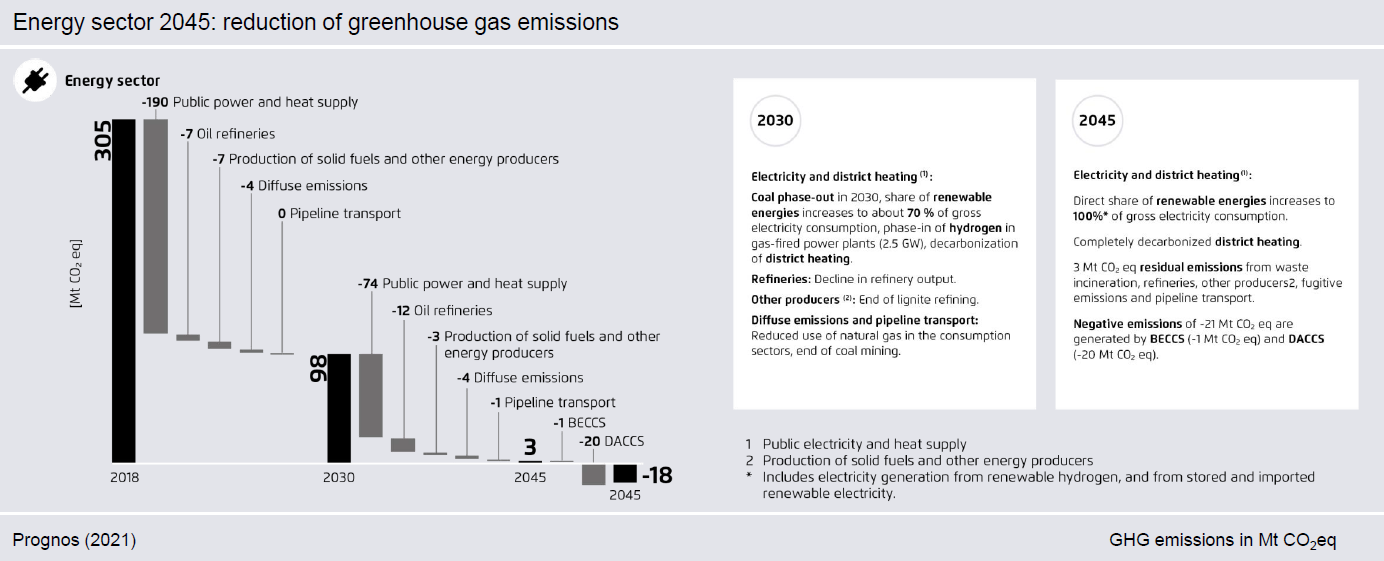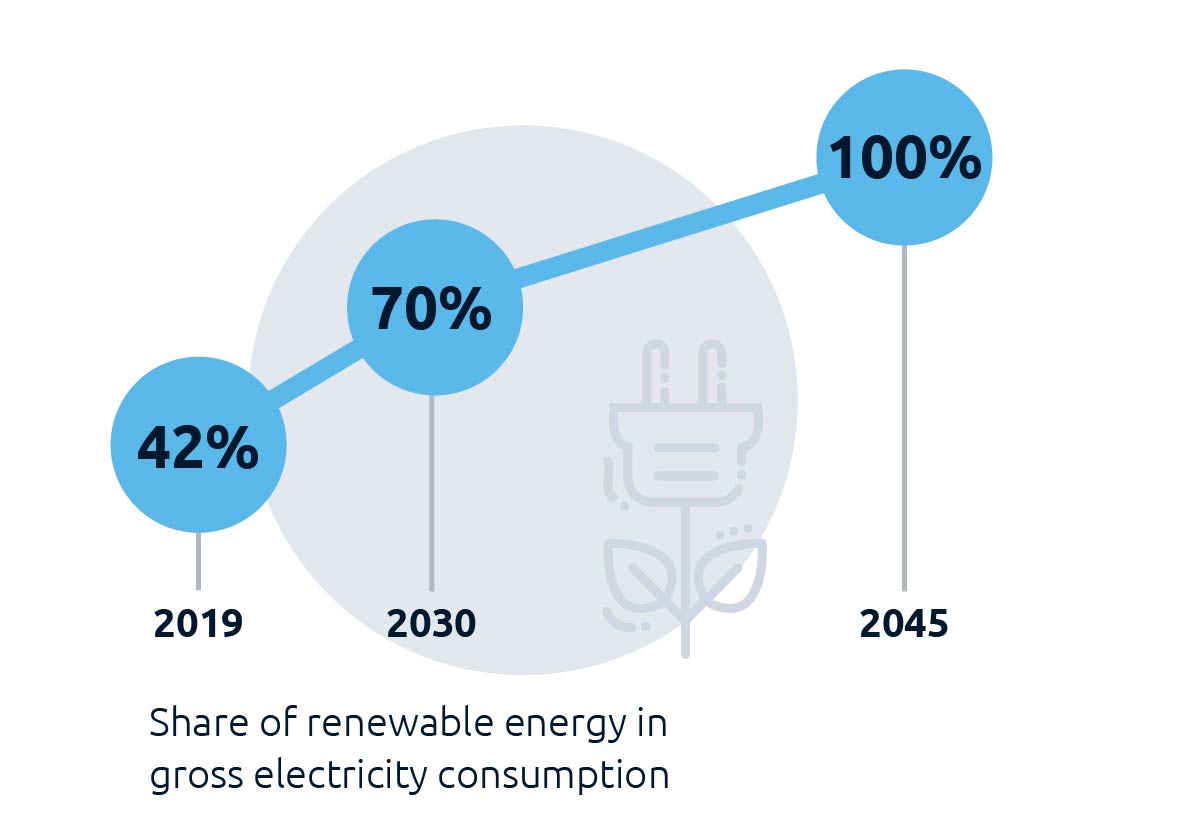42% of power generation is already renewable
The energy sector is the largest emitter of greenhouse gases in Germany, but at the same time it is the sector where most of the emissions reductions have occurred since 1990. Thanks to the support provided by the Renewable Energy Sources Act (EEG), wind, sun, biomass and water have become the most important electricity sources. Their share in electricity consumption rose from 6.5 percent in 2000 to 42.1 percent in 2019. At the same time, electricity generation from wind and solar energy became increasingly cost-effective.
The energy industry is still responsible for one third of total GHG emissions
Despite this progress, more than one third of total greenhouse gas emissions in 2018 were attributable to the generation of electricity and district heating in public power plants and to the manufacture of coal and petroleum products (305 million out of 858 million tons of CO2 equivalents). Of all sectors, the energy industry can and should make the largest contribution to reducing CO2 emissions by 2030. Replacing coal-based electricity with renewable energies and, in a transitional phase, with natural gas is one of the most cost-effective CO2 avoidance options.
A coal phase-out, the expansion of renewable energies and hydrogen form the basis
The main levers for reducing greenhouse gas emissions in the energy sector are the complete phase-out of coal by 2030, an increased expansion of renewable energies in the electricity sector and in heating networks, and the start of hydrogen use in gas-fired power plants and CHP plants. This has the potential to cut emissions from 305 today to 98 million tons of CO2 equivalents in 2030.
After 2030, renewable energies will be further expanded and electricity generation from fossil natural gas will be completely replaced by hydrogen.
Storage and other flexibility options can reconcile electricity demand and supply at any time. In the long term, negative emissions are necessary to compensate for the residual emissions, especially from agriculture, which are difficult to avoid. In the energy industry, this can be achieved on the one hand by capturing and storing emissions from the exhaust gases of biomass cogeneration plants (Bio-Energy with Carbon Capture and Storage, BECCS). On the other hand, CO2 can be filtered from the air and then permanently stored (Direct Air Capture and Carbon Storage, DACCS).

